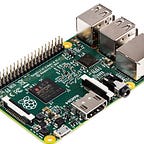Market Research and Data Analysis for Product Managers: A Comprehensive Guide
In the ever-evolving world of product management, staying ahead of the curve is paramount. One of the most effective ways to achieve this is through rigorous market research and data analysis. Understanding your market and making data-driven decisions can be the difference between the success and failure of a product. This comprehensive guide aims to provide you with the insights and tools you need to excel in these critical areas.
Why Market Research Matters
Market research is the foundation upon which successful products are built. It provides the necessary insights into consumer needs, preferences, and behavior. By understanding the market, product managers can identify opportunities, assess demand, and tailor products to meet the needs of their target audience.
Some key benefits of market research include:
- Identifying Market Needs: Understanding what consumers want helps in developing products that meet those needs.
- Competitive Analysis: By studying competitors, you can identify gaps in the market and opportunities to differentiate your product.
- Risk Mitigation: Informed decisions based on market research can help mitigate risks associated with product launches.
- Customer Insights: Deep dive into customer preferences, pain points, and usage patterns for more effective product strategies.
Steps in Conducting Market Research
- Define Your Objectives: Clearly outline what you aim to achieve with your market research. This will guide the entire process and ensure you stay focused.
- Choose Your Research Methodology: Decide whether you will use qualitative methods (like interviews and focus groups) or quantitative methods (like surveys and statistical analysis), or a combination of both.
- Collect Data: Gather information from various sources such as customer feedback, industry reports, and competitive analysis.
- Analyze Data: Use tools and techniques to interpret the data and draw meaningful conclusions.
- Report Findings: Present your findings in a way that is easy to understand and actionable for stakeholders.
The Role of Data Analysis in Product Management
Data analysis takes the insights gained from market research and turns them into actionable strategies. It involves examining large sets of data to identify trends, patterns, and correlations that can inform product decisions.
Some key aspects of data analysis include:
Customer Segmentation
By analyzing data, product managers can segment their customer base into distinct groups. This allows for more targeted marketing and product development efforts.
Performance Metrics
Tracking key performance indicators (KPIs) is crucial for understanding how a product is performing in the market. Metrics such as customer acquisition cost (CAC), lifetime value (LTV), and churn rate provide valuable insights.
A/B Testing
A/B testing involves comparing two versions of a product or feature to determine which performs better. This data-driven approach helps in making informed decisions about product changes.
Predictive Analysis
Using historical data to predict future trends and behaviors can provide a competitive advantage. Predictive analysis helps in forecasting demand, optimizing pricing, and planning product roadmaps.
Tools and Techniques for Effective Data Analysis
Several tools and techniques can aid in the process of data analysis. Some popular ones include:
- Google Analytics: A powerful tool for understanding website and app traffic, user behavior, and conversion rates.
- Tableau: A data visualization tool that helps in creating interactive and shareable dashboards.
- Excel: A versatile tool for data manipulation, analysis, and visualization.
- SQL: A programming language used for managing and querying relational databases.
- R and Python: Programming languages that offer a range of libraries and tools for statistical analysis and machine learning.
Conclusion
Market research and data analysis are indispensable tools for product managers. They provide the insights and evidence needed to make informed decisions, minimize risks, and maximize the potential for success. By mastering these disciplines, product managers can drive innovation, meet customer needs more effectively, and ultimately deliver products that stand out in the market.
Stay curious, stay analytical, and let data be your guide on the path to product excellence.
